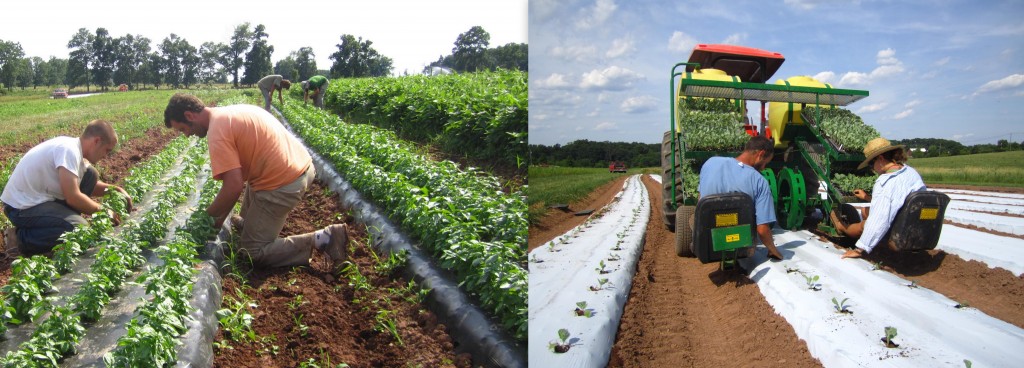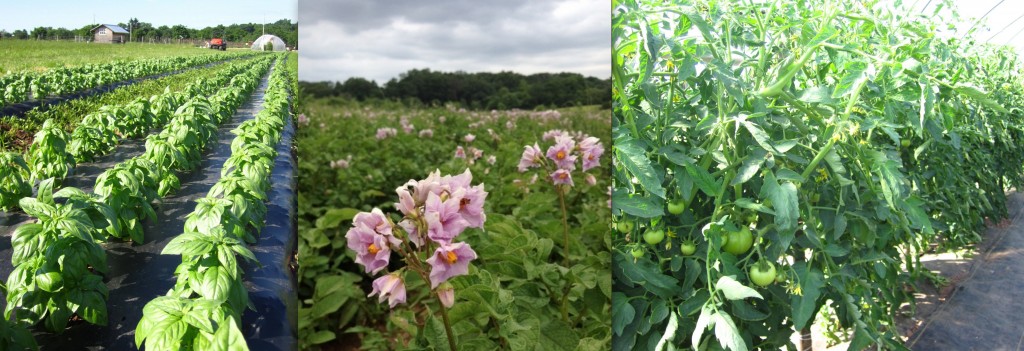04 Jul Share week 8: Irrigating!
It’s heating up at the farm, and we are working around the clock to keep the farm irrigated. Anyone with a garden, or a lawn, can see that we are in need of some nice steady rainfall. As we irrigate, mostly through drip tape, you can almost watch the plants instantly respond and spring up a few inches. Our intern and irrigation manager, Mike, can be seen buzzing around the farm in the little orange Kubota car (nicknamed “The Shark”), turning water on and off, and fertigating through the drip tape with sea minerals, sea weed and fish emulsion. He and Tom develop a complex set of weekly and daily “directives”, with the field map color coded and highlighted. To keep everything watered, and to take advantage of the cool nights, fields turned on at sunset need to be switched over around 3am, then the next set of fields turned over in the morning, and so on throughout the day. Managing the watering needs of 30+ acres in a dry spell is no small task but Mike, and Tom, are doing an amazing job! Let’s hope for some rain (no thunderstorms please!), to give them a reprieve.
Our crew spent yesterday planting fall brassicas: brussel sprouts, cabbage, and broccoli. Next week, cauliflower. As we are on the cusp of harvesting our summer crops (tomatoes!!), we are also looking ahead 8 weeks to the fall crops. These fall crops are planted on white plastic mulch to help them deal with the strong summer heat, so they will flourish when they hit the cooler fall months.
Have a wonderful fourth of July, and enjoy this week’s share. I made a garlicky pesto over the weekend and tossed it with lightly cooked yellow beans- delicious, and perfect for a barbecue!
Photos and text by Tricia Borneman, Blooming Glen farmer and co-owner.



























